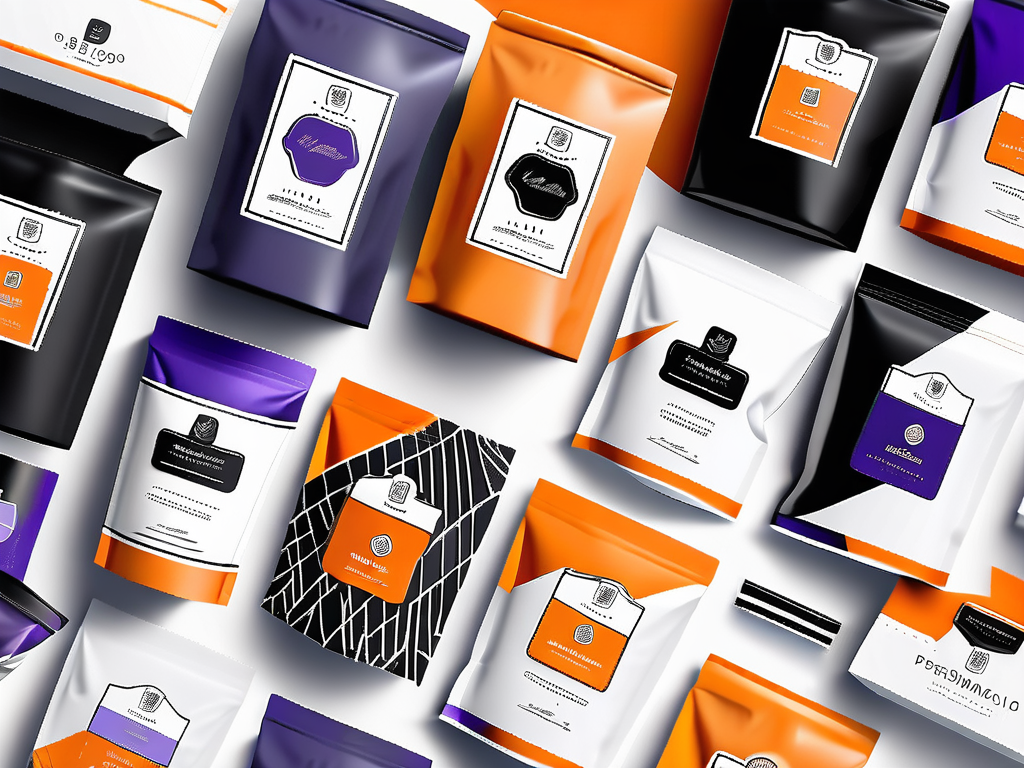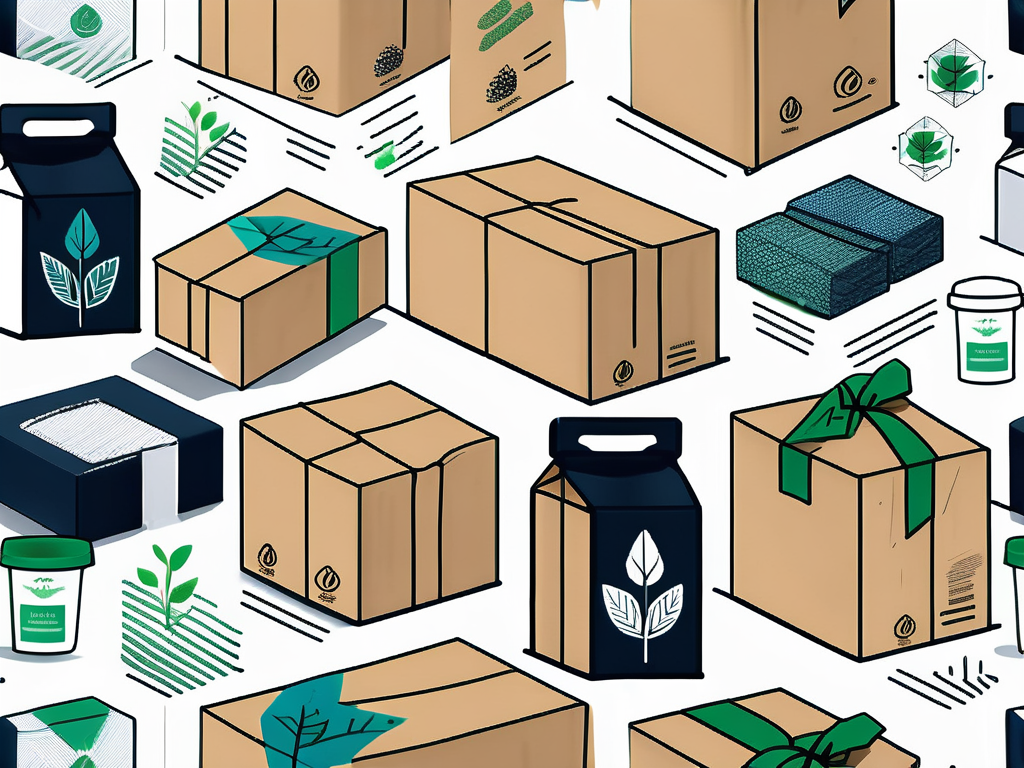Ecommerce packaging plays a crucial role in the success of online businesses, ensuring products are delivered safely and appealingly to customers.
Understanding what exactly is ecommerce packaging, along with all the ins and outs, can help businesses enhance customer satisfaction, reduce shipping costs, and promote sustainability.
Understanding the Basics of Ecommerce Packaging
When we talk about ecommerce packaging, we’re referring to the materials and design used to protect and present products purchased online and delivered to customers’ doorsteps. Ecommerce packaging plays a crucial role in ensuring that products arrive safely and create a positive impression on the customer.
Table of Contents
ToggleThe Importance of Ecommerce Packaging
Ecommerce packaging is more than just a protective barrier; it’s the first physical touchpoint between your brand and the customer. A well-designed package can elevate the perceived value of your product and help your brand stand out in a crowded marketplace. Here’s why ecommerce packaging matters:
- Protection During Transit: The primary function of ecommerce packaging is to safeguard your products from damage during shipping. Sturdy, well-designed packaging ensures that items reach customers in perfect condition, minimizing returns and boosting customer satisfaction.
- Brand Presentation: Your packaging is a powerful branding tool. From the box design to the unboxing experience, it reflects your brand’s identity. Thoughtfully crafted packaging can leave a lasting impression and foster brand loyalty.
- Eco-Friendly Practices: Modern consumers are increasingly eco-conscious. By choosing sustainable materials and designing recyclable or biodegradable packaging, you not only reduce your carbon footprint but also appeal to environmentally aware customers. This commitment to sustainability can enhance your brand’s reputation and encourage repeat business.
- Customer Experience: The unboxing experience is a significant part of the customer journey. Innovative and attractive packaging can create excitement and delight, leading to positive reviews and social media shares, further amplifying your brand’s reach.
Different Types of Ecommerce Packaging
Ecommerce packaging comes in various forms, each with its own advantages and purposes. Some common types include:
- Corrugated boxes: These sturdy boxes are ideal for shipping products that require extra protection.
- Flexible mailers: Perfect for lightweight and non-fragile items, these mailers offer flexibility and cost-effectiveness.
- Bubble mailers: Padded with bubble wrap, these mailers provide added cushioning and protection for delicate items.
- Rigid boxes: These premium boxes are used for luxury products, adding a touch of sophistication to the unboxing experience.
Each type of packaging serves a specific purpose based on the nature of the product being shipped and the brand’s overall packaging strategy. By carefully selecting the right packaging materials and design, businesses can not only protect their products but also create memorable unboxing experiences that leave a lasting impression on customers.
The Role of Ecommerce Packaging in Branding

Unboxing has become an incredibly popular trend, with consumers eagerly sharing their unboxing experiences on social media. By creating a memorable unboxing experience, you can generate buzz around your brand and increase customer loyalty.
To achieve this, consider adding personalized touches, such as thank you notes or surprise gifts, that reflect your brand’s personality. These small gestures can make a big impact on the customer’s overall experience and increase the chances of repeat purchases.
Furthermore, incorporating eco-friendly packaging materials can also enhance the unboxing experience. Sustainable packaging not only aligns with current consumer preferences for environmentally conscious brands but also adds a unique element to the unboxing process. From recycled cardboard boxes to biodegradable packing peanuts, eco-friendly packaging can showcase your brand’s commitment to sustainability.
How Packaging Reflects Your Brand Identity
Your ecommerce packaging is a direct reflection of your brand’s identity. It should align with your brand’s values, aesthetics, and target audience. Packaging design elements should be consistent with your brand’s visual identity. These include:
- Colors
- Typography
- Imagery
Moreover, the unboxing journey itself can be an extension of your brand story. Consider incorporating elements of surprise and delight into the packaging design to evoke positive emotions in customers. For example, using interactive packaging techniques like hidden messages or puzzles can create a sense of excitement and engagement, leaving a lasting impression on the recipient.
Incorporating kitting fulfillment services can further enhance this experience by allowing you to bundle various products into a cohesive set that tells a story or meets specific customer needs. By carefully considering the design and materials used in your packaging, you can communicate your brand’s story and values, and create a cohesive and memorable brand experience for your customers.
Sustainable Ecommerce Packaging
Sustainable ecommerce packaging is gaining traction as customers increasingly demand eco-friendly options that minimize waste and reduce environmental impact.
Eco-Friendly Packaging Materials
There are several eco-friendly packaging materials available, each offering unique benefits:
- Recycled Cardboard: Sturdy and widely recyclable, perfect for shipping boxes.
- Biodegradable Plastics: Breaks down naturally, reducing long-term environmental impact.
- Compostable Materials: Made from organic materials, these decompose into natural elements, leaving no toxic residue.
Choosing these options not only meets customer expectations but also contributes to a healthier planet.
Innovative Approaches to Sustainable Packaging

One innovative approach to sustainable packaging is mushroom packaging, also known as mycelium packaging. This biodegradable material is made from agricultural waste and mycelium, the root structure of fungi. It is not only compostable but also provides a protective cushion for products, offering a sustainable alternative to traditional packaging materials.
Reusable Packaging Systems
Another emerging trend in sustainable ecommerce packaging is the adoption of reusable packaging systems. Companies are exploring the concept of circular packaging, where containers are designed to be returned, cleaned, and reused multiple times. This approach not only reduces waste but also fosters a sense of responsibility among consumers to participate in the recycling process.
Benefits of Using Sustainable Packaging Materials
Using sustainable packaging materials offers numerous benefits for both your brand and the planet:
- Reduced carbon footprint: Sustainable packaging materials require fewer resources and emit fewer greenhouse gases during production and disposal.
- Enhanced brand image: By showcasing your commitment to sustainability, you can attract eco-conscious customers and differentiate your brand from competitors.
- Cost savings: Recycled and biodegradable materials can be cost-effective in the long run, potentially reducing packaging costs.
Customizing Your Ecommerce Packaging
While aesthetics are important, the primary function of ecommerce packaging is to protect your products during shipping. Designing packaging that provides adequate cushioning and safeguards against potential damage is crucial.
Protecting Your Products
Consider the nature of your products and their fragility. Use appropriate cushioning materials and choose packaging sizes that fit your products’ dimensions to prevent excessive movement during transit. Here are some strategies to enhance product protection:
- Cushioning Materials: Use bubble wrap, foam inserts, or air pillows to cushion your products.
- Right-Sized Packaging: Select packaging sizes that snugly fit your products to minimize movement.
- Custom Inserts: Design custom inserts or compartments to securely hold products in place.
- Shock-Absorbing Layers: Incorporate layers that absorb shocks and vibrations during transit.
When it comes to product protection, it’s not just about the materials you use, but also about the design of the packaging itself. Utilizing features like inner compartments, custom inserts, or shock-absorbing layers can add an extra layer of protection and ensure that your products arrive in pristine condition.
Incorporating Branding Elements into Packaging
Customizing your ecommerce packaging is an excellent opportunity to reinforce your brand’s identity and enhance brand recognition. Incorporate your logo, tagline, and brand colors into your packaging design to create a cohesive brand experience.
- Branding Elements: Use your logo, tagline, and brand colors to create a consistent look.
- Website and Social Media: Include your website URL and social media handles to encourage customer engagement.
- Anti-Counterfeiting: Custom packaging can prevent counterfeiting and unauthorized reselling by making your products easily identifiable.
Furthermore, consider adding a personalized touch to your packaging, such as including a thank you note or a discount code for their next purchase. These small gestures can leave a lasting impression on customers and increase their loyalty to your brand. Remember, packaging is not just a means to deliver products; it’s also a powerful marketing tool that can set you apart from competitors.
Legal and Regulatory Considerations for Ecommerce Packaging
When shipping products internationally, it’s crucial to comply with packaging laws and regulations specific to each country. Check the regulations to ensure that your packaging materials and design meet the required safety standards.

For example, some countries may have restrictions on certain packaging materials or labeling requirements. By understanding and adhering to these regulations, you can ensure a smooth and compliant shipping process.
It’s also important to consider environmental regulations when designing your ecommerce packaging. Many countries are implementing laws to reduce packaging waste and promote sustainable materials. By using eco-friendly packaging materials and minimizing excess packaging, you can demonstrate your commitment to environmental responsibility.
Compliance with International Shipping Standards
When shipping products globally, it’s essential to comply with international shipping standards to ensure your packages arrive safely and efficiently. Consider factors such as weight limits, dimensions, and packaging requirements set by international shipping carriers.
Meeting International Shipping Requirements
To ensure smooth global shipping, adhere to the specific guidelines and regulations of international shipping carriers. Here are some key considerations:
- Weight Limits: Be aware of the maximum weight limits for different carriers and countries.
- Dimensions: Ensure your packaging dimensions comply with the standards to avoid surcharges.
- Packaging Requirements: Follow the packaging guidelines, including the use of durable materials and proper labeling.
Working with reliable shipping partners who are well-versed in international shipping can help you navigate complex regulations, reduce shipping costs, and avoid costly customs delays. These partners can provide valuable insights and support to streamline your shipping processes.
Staying Ahead with Packaging Innovations
Furthermore, staying up-to-date with the latest trends and innovations in ecommerce packaging can give you a competitive edge. Here are some areas to explore:
- Smart Packaging: Integrate technologies like QR codes and NFC tags to enhance customer engagement and provide additional product information.
- Sustainable Packaging: Use eco-friendly materials and designs that resonate with environmentally conscious consumers.
- Protective Innovations: Adopt advanced cushioning and shock-absorption technologies to ensure product safety.
Exploring new packaging technologies can elevate your brand’s image and customer experience, making your products more appealing and your brand more memorable.
Boost Customer Satisfaction with Thoughtful Packaging
Now that you have a comprehensive understanding of ecommerce packaging, you can make informed decisions about the materials, design, and customization options that best represent your brand and deliver an exceptional unboxing experience for your customers.
By adhering to international shipping standards and embracing innovative packaging solutions, you can ensure that your products reach customers worldwide in perfect condition, enhancing their overall satisfaction and loyalty.

![How Comedian Ellen Skrmetti Reclaimed Her Time with Fulfyld’s Local Fulfillment Solution [Case Study]](https://img.fulfyld.com/cdn-cgi/imagedelivery/LhwpGZtkAL7sOMr5mtwT5A/www.fulfyld.com/2025/04/unnamed-5.png/w=150,h=150,fit=crop)
![How Nicole’s Best Gluten Free Flour Found Their Perfect Fulfillment Match with Fulfyld [Case Study]](https://img.fulfyld.com/cdn-cgi/imagedelivery/LhwpGZtkAL7sOMr5mtwT5A/www.fulfyld.com/2025/04/unnamed-4.png/w=150,h=150,fit=crop)
![How Sonia Roselli Beauty Maintained Premium Standards Through Long-Term Partnership with Fulfyld [Case Study]](https://img.fulfyld.com/cdn-cgi/imagedelivery/LhwpGZtkAL7sOMr5mtwT5A/www.fulfyld.com/2025/04/unnamed-3.png/w=150,h=150,fit=crop)
![How Daily Grind Planner Transformed Their Customer Experience by Partnering with Fulfyld [Case Study]](https://img.fulfyld.com/cdn-cgi/imagedelivery/LhwpGZtkAL7sOMr5mtwT5A/www.fulfyld.com/2025/04/unnamed-2.png/w=150,h=150,fit=crop)
![How Pine Company Wearables Reclaimed Their Time by Outsourcing Fulfillment to Fulfyld [Case Study]](https://img.fulfyld.com/cdn-cgi/imagedelivery/LhwpGZtkAL7sOMr5mtwT5A/www.fulfyld.com/2025/04/unnamed-1.png/w=150,h=150,fit=crop)
